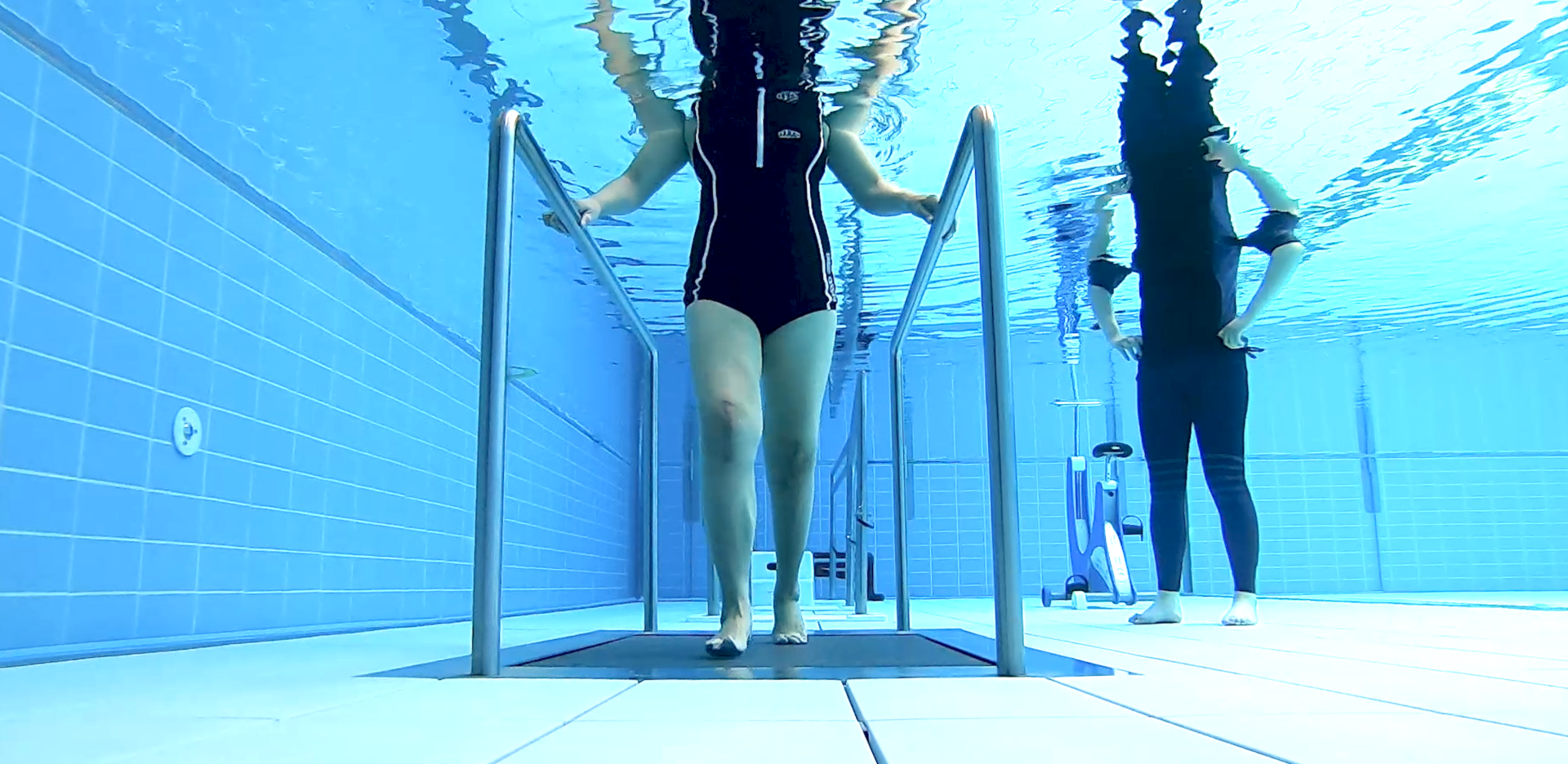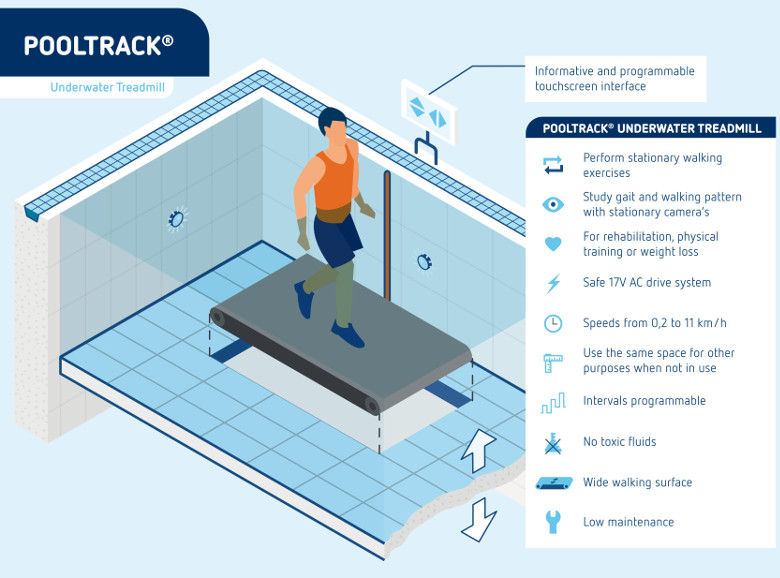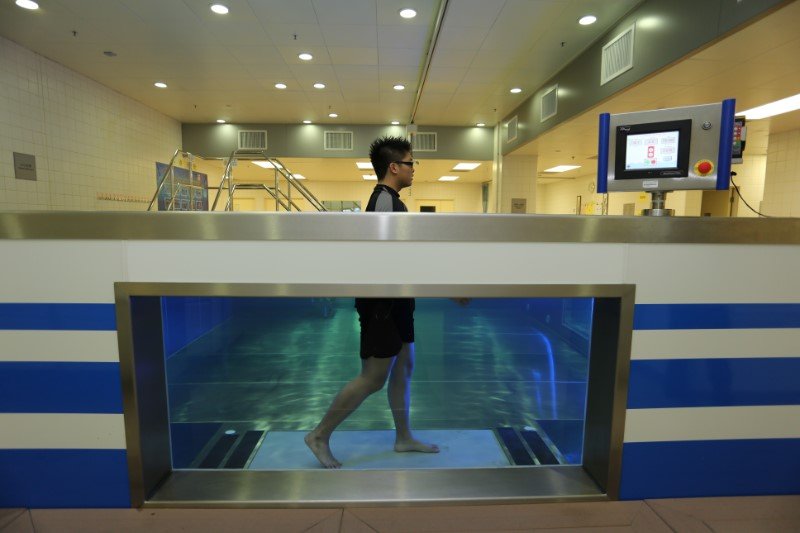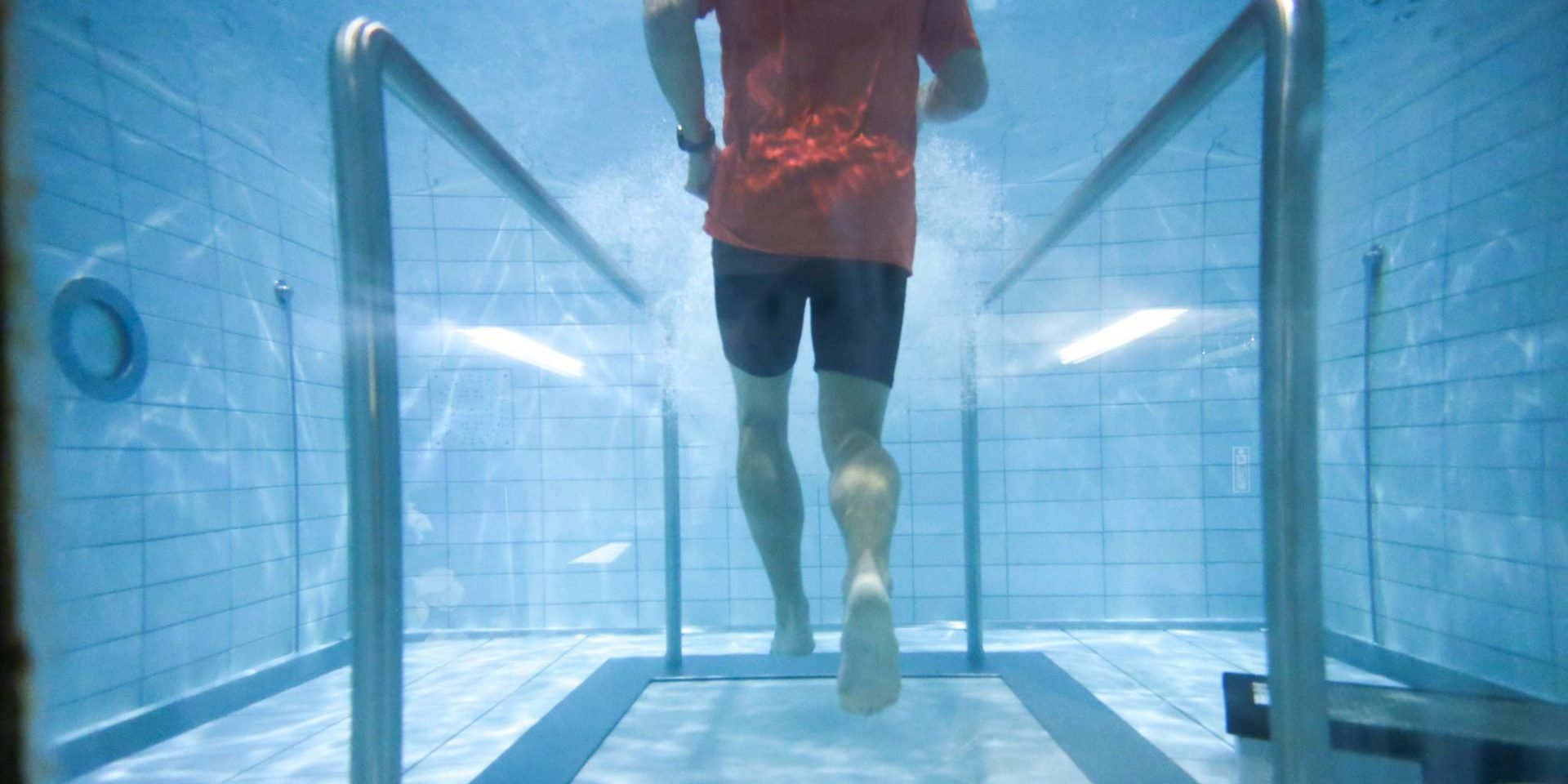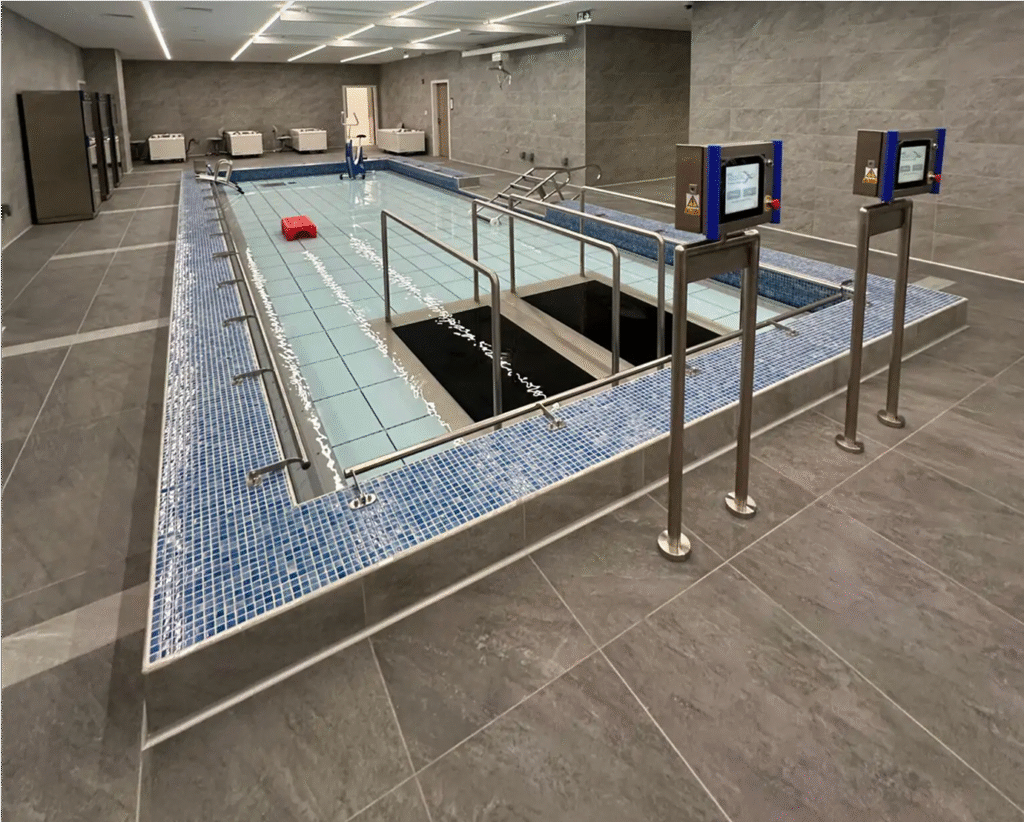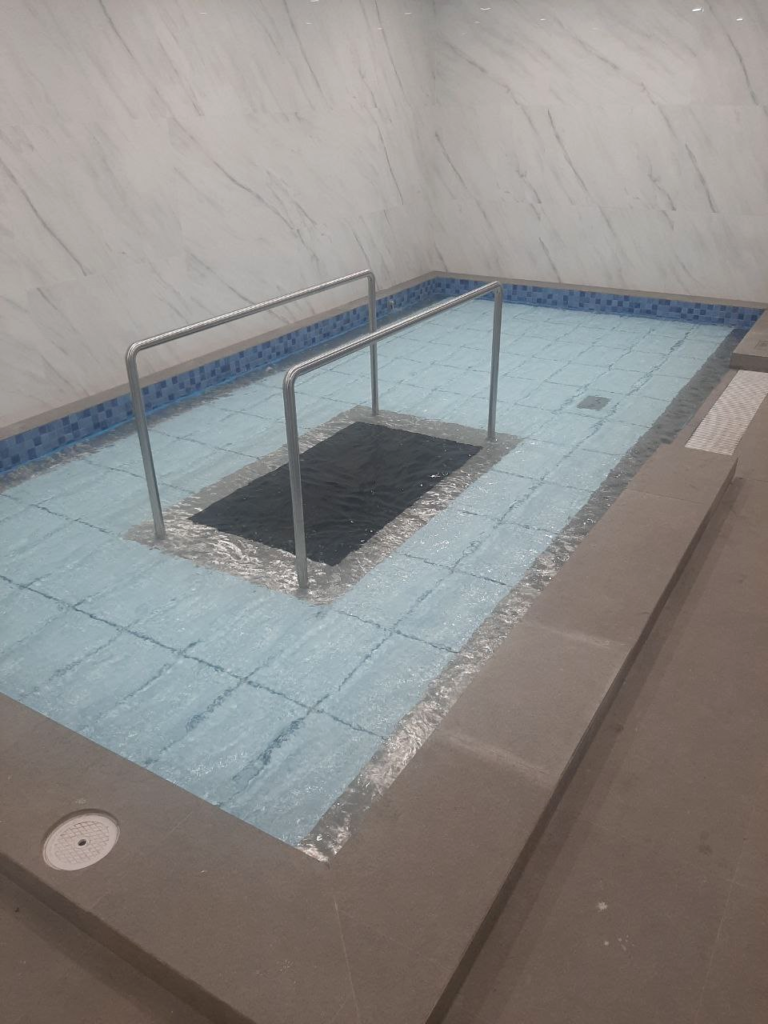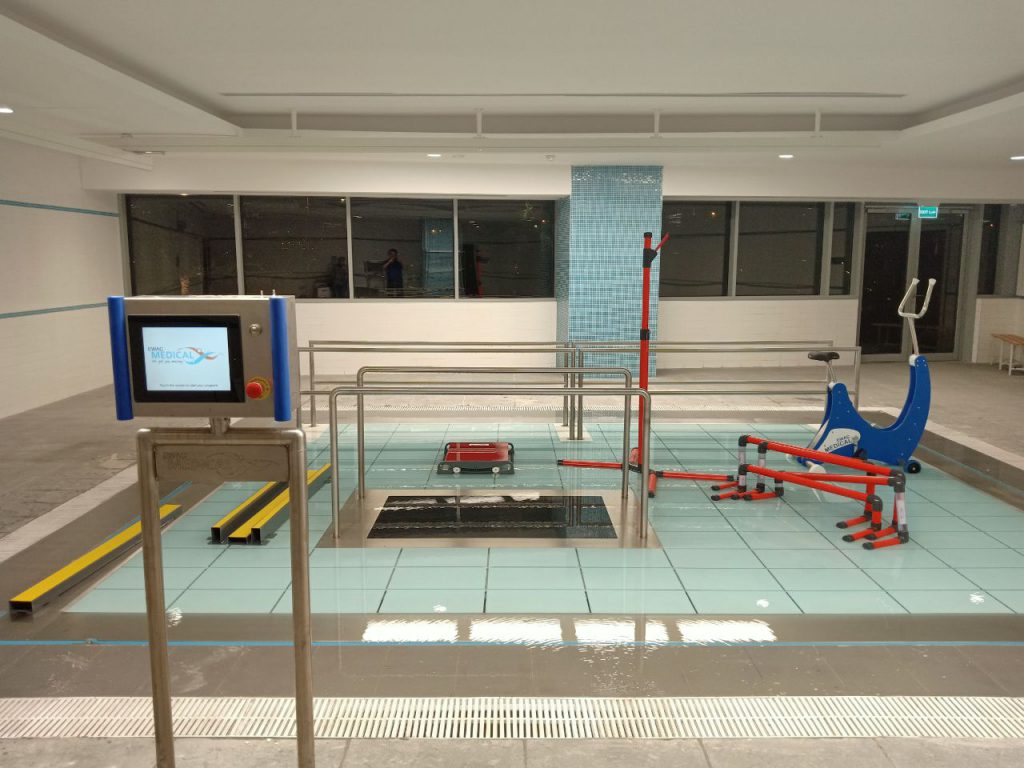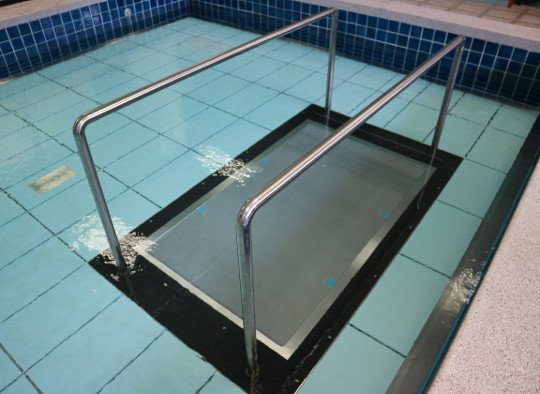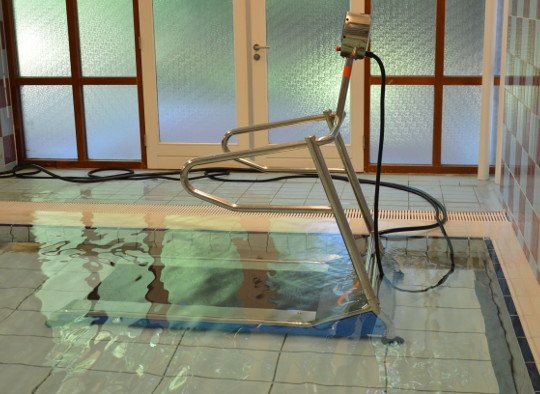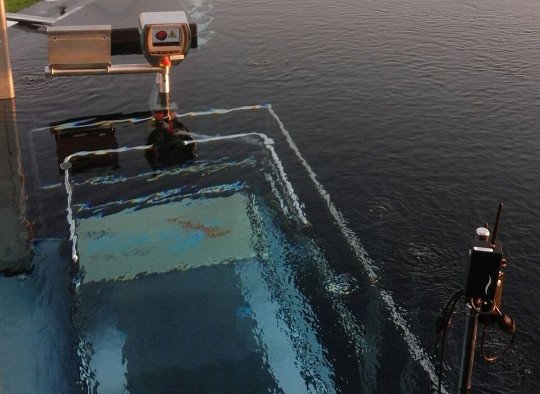The underwater treadmill’s strict rhythm can be very beneficial in treating neurological patients.
By incorporating an underwater treadmill into a movable swimming pool floor, the user can tailor the loading on the patient’s lower extremities to the stage of rehabilitation. Walking exercises at various body loads are possible with a fully integrated underwater treadmill. The parallel bars can be removed, freeing up the entire area of the movable swimming pool floor for other hydrotherapy methods.
The underwater treadmill can be installed in any new pool floor, but it is also ideal for existing EWAC Medical movable swimming pool floors.
EWAC Medical not only provides underwater treadmills, but also actively participates in the acquisition and dissemination of hydrotherapy knowledge. In addition, we are actively involved in the development of new underwater exercise equipment for rehabilitation purposes. This page contains more detailed information about all of the factors that must be considered when using an underwater treadmill.
